Amazing 9 Layer Density Tower
With this science magic trick, you’ll put a new spin on our famous Seven-Layer Density Column demonstration. First, you’ll discover how to stack seven or […]

There’s something very important about oil and water that you probably already know: oil doesn’t mix with water! That explains why oil spills on the ocean float on the surface and why throwing water on a grease fire is just going to make everything worse. Since you realize that oil and water don’t mix and never will (without some chemical help), let’s have some fun with how they repel each other.
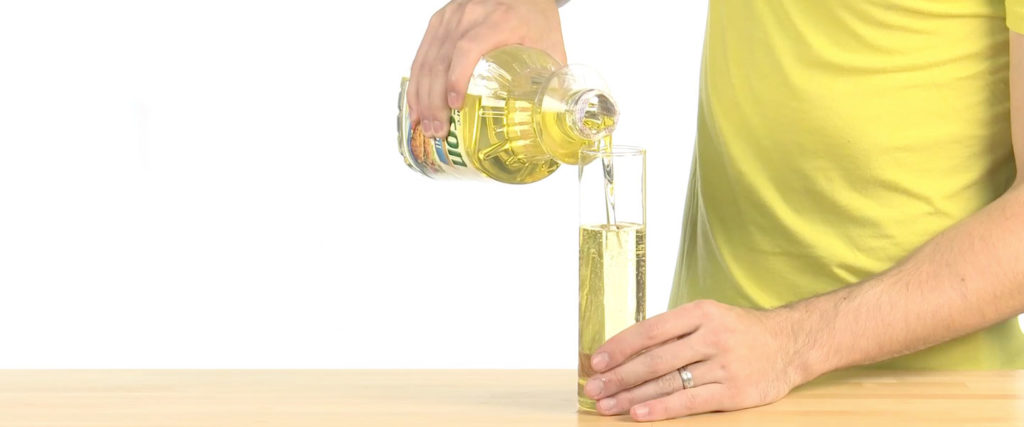
NOTE: Before you do this, make sure you’re working in the large tub. This effect is dramatic but the science you demonstrate can get lost in the mess you’ll be making. See the “Take It Further” section for more ideas.
Set one of the identical containers in the tub. Fill the container to the brim with vegetable oil.
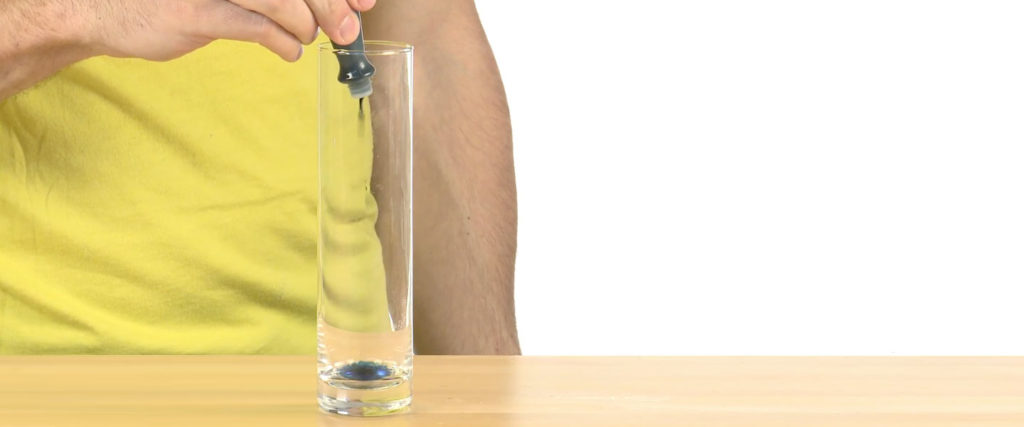
In an identical second container also in the tub, add several drops of food coloring. The color choice is completely up to you.
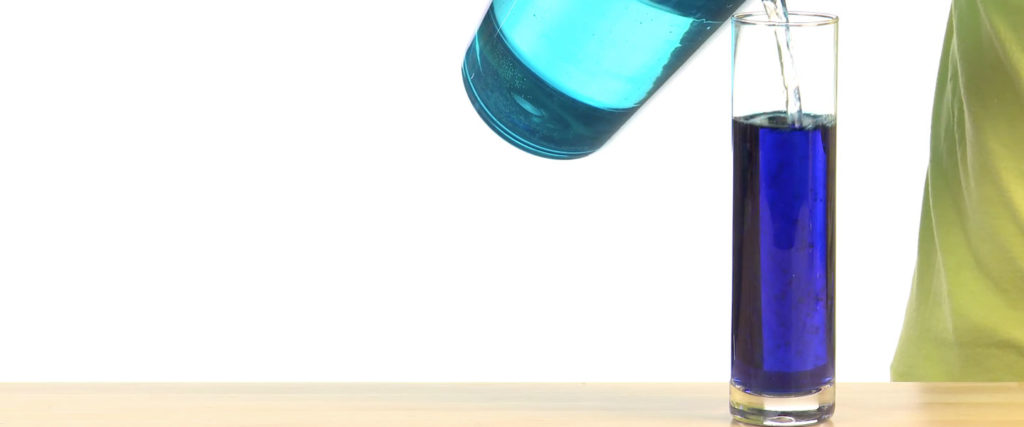
Fill the container to the brim with water.
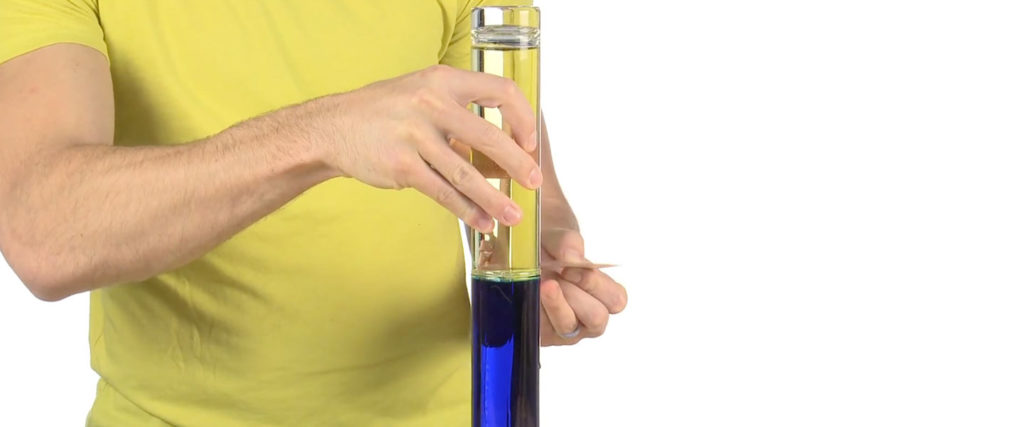
Set the playing card over the mouth of the container filled with vegetable oil. Hold it firmly in place. Lift the oil container, turn it upside-down, and line it up directly over the water-filled container. Set the oil in place over the container holding the water. Keep the card between the containers to let the liquids settle. Slowly and gently remove the playing card. What happens? The oil and water remain in their respective upper and lower containers.
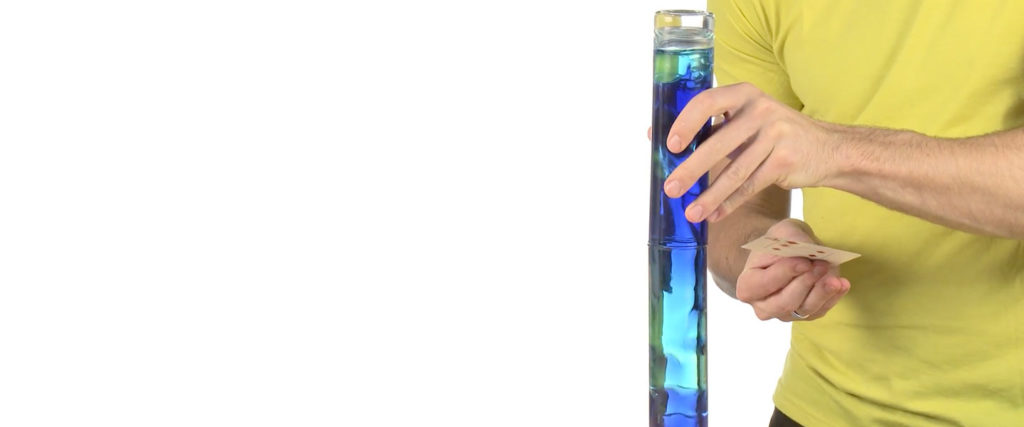
Now, repeat the process. (Basically, this means start over completely. See the “Take It Further” section.) This time, turn the water container upside down and place it on top of the oil-filled container. Carefully remove the card and watch what happens. The water and oil trade places! If you wait long enough, it will look almost exactly opposite of how it started, too.
First of all, you confirmed what you already knew… oil and water do not mix. The molecules of water can’t mix with the molecules of oil. Even if you try to shake up a bottle of half-oil and half-water, the oil just breaks up into smaller droplets, but it doesn’t truly mix with the water. Also, food coloring only mixes with water. It does not color the oil at all. If you see coloring in the oil, those are tiny droplets of water trapped in the oil.
When you set the water container above the oil container and remove the card, the water sinks and the oil floats. They trade places! Oil floats on the surface because water is heavier than oil. Scientists say that water is more dense than oil. This is why the oil always stays in the top container.
There’s no way not to make a mess with this activity either doing it on your own or in front of a crowd. If you’re in a performance setting and time matters, use four identical containers and fill two with oil and two with colored water in advance. Do all your work in a tub to be safe and leave the container of oil on top of the water. Do the change with the second container of water on the top in a second tub. (The comparison is good for the audience to see before you pull out the card.) When you do pull the card, the colorful swap takes place, and everybody cheers.
Now, you’re either on your own or in front of a crowd and the challenge comes when you separate the glasses. You want the oil (on top no matter what) to flow down the lower glass and into the tub. That happens when you separate the glasses even a little. After it flows out, stir in a little dish soap, pour in the colored water, swirl the tub, rinse the glasses, and pour the soapy solution down a toilet. Yes, it’s a mess but it’s all for science!